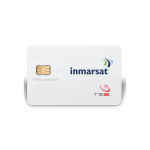Amplifying blockchain security through innovative means is revolutionizing the digital landscape. Rather than relying on traditional security paradigms, a proactive approach is being embraced to fortify blockchain networks against evolving cyber threats. One compelling strategy involves stringent access controls to authenticate legitimate users and devices within the network. By implementing Zero Trust Architecture (ZTA), unwanted intrusions are deterred, fostering a more secure blockchain environment.
Furthermore, ZTA bolsters security through robust identity management protocols. Establishing a system that rigorously verifies the identities of entities interacting within the blockchain network ensures that only authenticated individuals partake in transactions, heightening overall security. Embracing encryption measures safeguards sensitive data from unauthorized access, reinforcing the confidentiality and integrity of information stored on the blockchain.
Continuous monitoring and auditing, facilitated by ZTA, offer proactive surveillance that curtails potential security breaches in real-time. This vigilant approach enables rapid responses to security threats, preempting malicious attacks and mitigating risks before they escalate. Additionally, integrating zero-trust principles in smart contract development helps to identify and address vulnerabilities preemptively, bolstering the resilience of blockchain security measures.
In conclusion, the synergistic integration of blockchain technology and Zero Trust Architecture sets the stage for a formidable defense mechanism against cyber threats. By adhering to strict access controls, fortified identity verification practices, data encryption, and continuous monitoring, blockchain ecosystems can fortify their security posture, ensuring a safer digital realm for all stakeholders.
Enhancing Blockchain Security with Cutting-Edge Innovations
Blockchain technology continues to transform the digital realm, with a focus on bolstering security to safeguard against cyber threats. While the use of Zero Trust Architecture (ZTA) has been highlighted as a crucial component in enhancing blockchain security, there are additional innovative security measures worth exploring to further fortify network defenses.
What are some key questions in enhancing blockchain security with innovative measures?
1. How can biometric authentication enhance security?
Implementing biometric authentication in blockchain networks can provide an additional layer of security by verifying users based on unique physical characteristics such as fingerprints or facial recognition.
2. What role can quantum-resistant cryptography play in blockchain security?
The threat of quantum computers jeopardizing traditional cryptographic methods has prompted the development and integration of quantum-resistant cryptography in blockchain systems to future-proof security standards.
3. How can decentralized governance models improve security?
Adopting decentralized governance models in blockchain networks can reduce the risk of single points of failure and enhance transparency, ultimately bolstering overall security posture.
Advantages and Disadvantages
While advancements in blockchain security measures offer numerous benefits, there are also challenges and controversies to consider:
Advantages:
– Enhanced access controls and identity verification minimize the risk of unauthorized access to blockchain networks.
– Encryption technologies safeguard sensitive data, ensuring confidentiality and integrity.
– Continuous monitoring and auditing provide real-time threat detection and response capabilities.
Disadvantages:
– Implementation complexity may pose challenges for organizations without sufficient expertise.
– Maintaining a balance between security and usability can be a delicate task, impacting user experience.
– Potential regulatory concerns surrounding data privacy and compliance could result in friction with innovative security measures.
Key Challenges and Controversies
1. Interoperability: Ensuring seamless integration of diverse blockchain networks while maintaining robust security standards remains a challenge in the blockchain ecosystem.
2. Scalability: Balancing security enhancements with the need for scalable blockchain solutions poses a persistent challenge in meeting the demands of a growing user base.
3. Regulatory Compliance: Navigating regulatory frameworks to ensure compliance while deploying innovative security measures can lead to uncertainties and controversies within the industry.
In navigating the complexities of enhancing blockchain security, stakeholders must weigh the advantages and disadvantages of innovative security measures to establish a robust defense mechanism against evolving cyber threats.
For more insights on blockchain security innovations, you can explore blockchain.com.
















